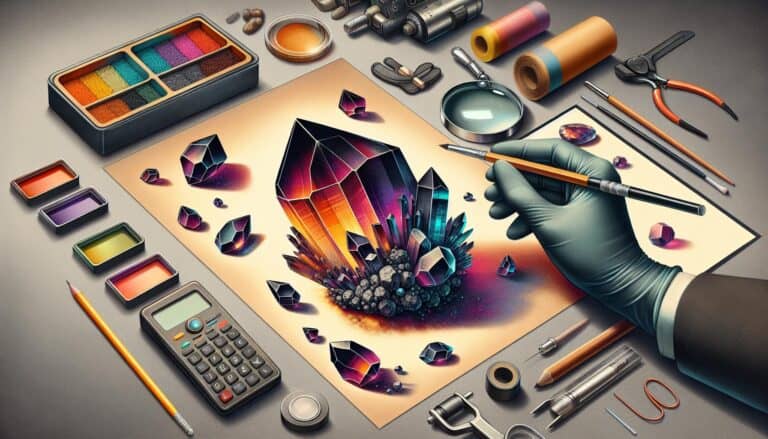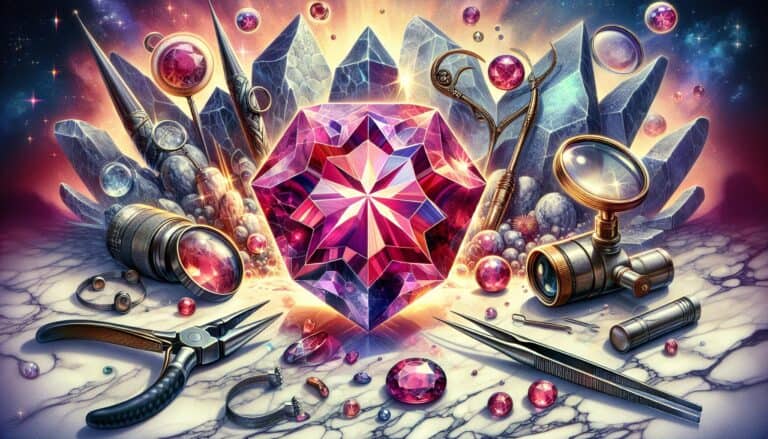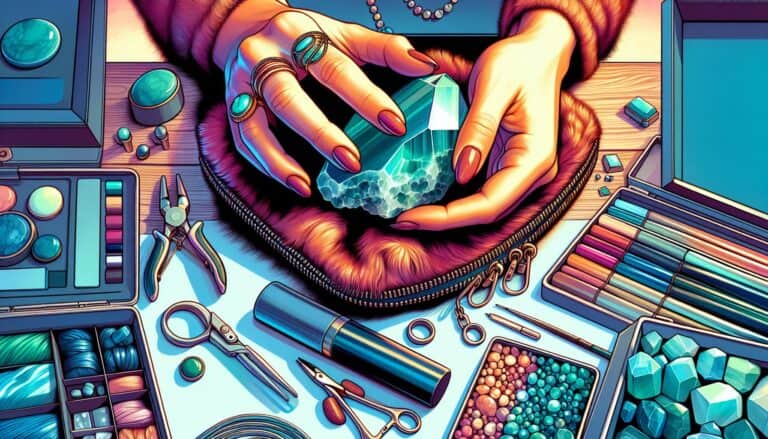Ever wondered about the value of that shiny, silvery metal called rhodium?
You’re not alone. Rhodium’s not just another element on the periodic table—it’s one of the most expensive precious metals out there, and for good reason.
Your curiosity about rhodium’s worth is spot on, especially if you’re considering investing or are just fascinated by the dynamics of the precious metals market.
Let’s dive into what makes rhodium so valuable and how its price stacks up against other heavyweights like gold and platinum.
Rhodium, a rare, corrosion-resistant metal, is prized for its use in catalytic converters, electronics, and jewelry. Its value is driven by scarcity, demand, and industrial applications. Rarity, particularly in larger, high-quality pieces, significantly influences rhodium’s price, making it one of the most expensive precious metals.
What Is Rhodium?
Rhodium is a rare silver-white metal that boasts a remarkable resistance to corrosion and oxidation. It’s a member of the platinum group metals (PGMs), which also includes palladium, platinum, iridium, osmium, and ruthenium. Rhodium’s scarcity combined with its industrial applications drive its value significantly higher than many other precious metals.
Primarily mined in South Africa, Russia, and Canada, rhodium’s production is limited. Interestingly, it’s often not mined directly but rather collected as a by-product from mining platinum and nickel ores. This contributes to its rare status and inherently high value.
Unique Properties
Odorless and tasteless, rhodium has a selection of unique properties that separate it from other precious metals:
- High reflectivity: Rhodiums’s brilliant reflective surface is ideal for jewelry, mirrors, and automotive components.
- Incredible durability: It possesses an exceptional ability to withstand wear and tear.
- Corrosion-resistant: This metal remains unscathed by harsh chemicals and severe environmental conditions.
- High melting point: It has a melting point of approximately 1964 degrees Celsius (3567 degrees Fahrenheit), making it perfect for high-temperature uses.
Industrial Uses
Rhodium’s industrial uses contribute significantly to its price. Here are some of its most prevalent applications:
- Automotive Industry: Rhodium is vital for catalytic converters, which reduce harmful emissions in vehicle exhaust systems.
- Electronics: It is used in manufacturing high-quality electrical contacts due its excellent conductivity.
- Jewelry: Often used to coat white gold or silver, rhodium enhances durability and gives jewelry a reflective white surface.
Understanding rhodium and its unique characteristics gives insight into why it’s so valuable. With its impressive features and limited supply, it continues to be a sought-after commodity in various industries worldwide.
Rhodium Prices: Factors That Affect Value

Just like any precious metal, the value of rhodium can fluctuate due to a variety of factors. Understanding these variables is key to grasping why rhodium can command such high prices.
Color, Clarity, and Cut Quality
While color, clarity, and cut quality are terms often associated with gemstones, they’re also applicable to the valuation of rhodium, especially when it’s used in jewelry. The allure of rhodium’s brilliant white finish is undeniable, influencing its use in high-end jewelry and its subsequent price. Jewelry-grade rhodium must display unblemished color and clarity to ensure the finest light reflection, a feature highly sought after by discerning buyers.
Market Demand and Availability
Supply and demand are fundamental forces behind rhodium’s worth. The rarity of rhodium means that any small fluctuation in the market can have a large impact on its price.
- Automotive industry: With its significant use in catalytic converters, the automotive sector applies constant pressure on rhodium availability. Emission control regulations worldwide drive this demand, and when the automotive industry booms, so does the need for rhodium.
- Investment interest: Fluctuations in investor interest can also affect rhodium prices. Investors typically turn to precious metals during times of economic uncertainty, and rhodium, being a rare and valuable asset, is no exception.
- Production changes: Disruptions in mining due to political instability, environmental hazards, or labor issues—particularly in major mining regions like South Africa—can tighten the supply and drive prices up.
Remember, since rhodium’s output is a mere fraction compared to other precious metals, any hiccup in production can yield drastic price volatility. Keep in mind, geopolitical tensions and changes in export policies can also influence market availability and pricing.
Understanding Rhodium: A Rare Gem

The Rarity of Rhodium
You’ve probably heard that rhodium is exceedingly rare, but what does that really mean? Extracted primarily as a byproduct of platinum and nickel mining, rhodium’s scarcity is profound, with its annual production amounting to a fraction of other precious metals. In fact, 90% of the world’s rhodium comes from just three countries: South Africa, Russia, and Canada, making its supply susceptible to geopolitical tensions and mining issues.
Imagine a metal so scarce that annual global production wouldn’t even fill a living room—that’s rhodium for you. Owing to its rarity, the price of rhodium is typically subject to extreme volatility. Investors and industry experts keep a close eye on production numbers and mining company reports to gauge potential market fluctuations.
Origins and Characteristics
Let’s delve into where rhodium comes from and what makes it stand out. Rhodium originates deep within the Earth’s crust, curated over eons and brought to the surface through meticulous mining processes. Its primary characteristics include a silvery-white appearance and an exceptional resistance to corrosion, which makes it not only attractive but incredibly durable.
Moreover, rhodium possesses a high melting point and low electrical conductivity, properties that endear it to high-tech industrial applications. While it’s less malleable than gold or silver, its hardiness is a plus for its primary use in catalytic converters, which help reduce harmful emissions from vehicles. The metal’s reflective nature also makes it ideal for jewelry, ensuring that pieces maintain their lustrous shine over time.
By understanding rhodium’s origins and characteristics, you’re better equipped to appreciate its value and the reasons behind its high demand in various sectors. Recognizing these factors is essential in comprehending its pricing and investment potential.
Rhodium Grading and Valuation
The Grading System for Rhodium
Rhodium, like other precious metals, undergoes a detailed grading process to determine its quality and value. The grading system for rhodium takes into account several key factors:
- Purity: This is measured in terms of the percentage of rhodium content in the alloy. The higher the purity, the more valuable the metal is considered to be.
- Weight: It’s measured in troy ounces, and as with other precious metals, more weight typically means a higher value.
- Condition: Rhodium that’s free from blemishes or impurities holds a premium over those with defects.
When you’re dealing with rhodium in the form of bullion or coins, the grading process will typically involve verification of weight and purity. This ensures investors and collectors know exactly what they’re getting, and can accurately assess the metal’s worth.
Certification and Appraisal
When it comes to the certification and appraisal of rhodium, you’re looking at a process that requires a keen eye and expert knowledge. Certified professionals evaluate rhodium products to provide an official document that verifies the rhodium’s authenticity and quality. This certification can be pivotal in establishing trust among buyers and sellers in the marketplace.
During an appraisal, the following are typically analyzed to ascertain rhodium’s value:
- Current market trends
- Historical prices
- Rarity and demand
A certified appraisal can provide assurance to potential buyers or investors that the rhodium product is worth its price tag. Appraisals are frequently used for insurance purposes, sales transactions, and potential entry into investment markets.
With rhodium’s significant industrial and investment demand, the grading and certification process is critical. Ensuring the authenticity and quality of your rhodium can ultimately have a substantial impact on its marketability and price realizations.
Current Market Trends in Rhodium Pricing
Understanding the current market trends in rhodium pricing is crucial if you’re considering investing or if you’re just curious about this rare metal’s economic landscape. Rhodium prices are notoriously volatile, but by keeping an eye on several key factors, you can get a sense of where the market might be heading.
Firstly, automotive demand remains a significant influencer since rhodium is used in catalytic converters to reduce harmful emissions. With global shifts toward cleaner energy and increased environmental regulations, demand for rhodium could continue to see an upward trajectory. However, breakthroughs in electric vehicle technology, which don’t require catalytic converters, could potentially dampen this demand.
In addition, investment interest has surged with investors looking for tangible assets amid economic uncertainties. Rhodium, with its scarcity and industrial application, has become an attractive option for those looking to diversify their portfolios beyond traditional assets like gold and silver.
- Keep an eye on the stock market’s performance as it often inversely correlates with precious metals.
- Watch global economic indicators which can influence investor behavior.
Supply constraints also play a pivotal role. Being one of the rarest metals on Earth, any disruptions in rhodium production can lead to swift price increases. Political instability in countries where rhodium is mined, like South Africa, can greatly affect availability and in turn, pricing.
Here’s a quick look at recent rhodium pricing trends:
| Year | Average Price per Ounce (USD) |
|---|---|
| 2020 | 8,200 |
| 2021 | 21,900 |
| 2022 | 13,800 |
Data sourced from leading metal exchanges.
These figures highlight the metal’s volatility and the potential for rapid price changes. When considering rhodium as part of your investment portfolio or for industrial use, it’s essential to stay updated with market reports and forecasts from credible sources. By doing so, you’ll hone your understanding of rhodium valuation and be better prepared to navigate its mercurial market.
The Most Expensive Rhodium
When you’re exploring the precious metals market, it’s clear that rhodium stands out due to its rarity and high value. Historically, rhodium has reached price peaks that surpass other precious metals by a significant margin. The factors that contribute to its hefty price tag are diverse, including scarcity, industrial demand, and its status as a sought-after investment commodity.
For instance, in the surge that occurred around 2008, rhodium prices skyrocketed to an all-time high, illustrating its potential for rapid value increases. The price fluctuations of rhodium have often been more abrupt than those seen in the gold or platinum markets. To give you a clearer picture of historical fluctuations:
| Year | Price Per Ounce (USD) |
|---|---|
| 2006 | 5,800 |
| 2008 | 10,000 |
| 2020 | 13,800 |
As a savvy investor or consumer interested in precious metals, monitoring the rhodium market is essential due to these significant price variations.
In jewelry, the use of rhodium, particularly for plating other fine metals, can add considerable value to a piece. Its reflective and corrosion-resistant nature enhances both beauty and durability. This adds another dimension to an already exclusive market, as the premium for rhodium-plated jewelry can be substantial.
Automotive industry demand, particularly for rhodium-based catalysts used in emissions control, is another driving factor. With stricter environmental regulations globally, the demand for catalytic converters remains high, which in turn sustains rhodium’s significant worth.
Investment interest in rhodium has also spiked, with various financial products tied to its value. Rhodium bars and coins, although rare, command impressive prices on the investment market. Whether looking at historical trends or current market dynamics, it’s evident that rhodium’s value is shaped by multiple influences, each reinforcing its status as one of the most expensive precious metals currently available.
Buying Rhodium: Tips and Recommendations
The allure of rhodium’s value brings with it a level of complexity when you’re looking to purchase. Being informed about where to buy and how to ensure the rhodium you purchase is authentic is fundamental.
Where to Purchase High-Quality Rhodium
To start with, reputable dealers are your go-to sources for high-quality rhodium. Whether you’re considering online marketplaces or physical stores, make sure they have:
- A strong history in the market
- Positive customer reviews
- Transparent pricing policies
Bullion exchanges and precious metals dealers often offer rhodium in various forms, but it’s typically found in the form of bars or coins. Here’s where specialization in precious metals comes into play—a dealer that focuses on these commodities will likely have the expertise you need to make sound purchases.
Ensuring Authenticity and Value
When you’re ready to pull the trigger on acquiring rhodium, the authenticity and value of your investment are paramount. Here’s what you should look for:
- Certification: Go for rhodium that’s certified by recognized institutions, ensuring that the purity and weight are as stated.
- Assay services: Using a third-party assay service to verify the quality of your rhodium can provide peace of mind.
- Tracking market trends: Stay informed about current and historical prices of rhodium to make an educated purchase.
Remember, rhodium’s rarity and the small market size mean that its price can be volatile. Monitoring market movements and buying when prices are down could offer better long-term value. However, it’s vital to balance timing with availability since waiting for the perfect price could result in missing the opportunity to purchase this scarce metal altogether.
Conclusion: Buying & Selling Rhodium
Understanding the true worth of rhodium requires you to consider its rarity and the dynamic factors influencing its market value.
It’s essential to keep a keen eye on automotive demand and investment trends, as these are key drivers of its pricing. Supply constraints and geopolitical issues can also sway rhodium’s value, so staying informed is critical. When you’re ready to invest or purchase, choose reputable dealers and insist on certification to ensure you’re getting genuine value. Remember, the right timing is crucial given rhodium’s volatility and scarcity—so monitor those market reports closely.
Your savvy approach to this precious metal can make all the difference in capitalizing on its worth.







